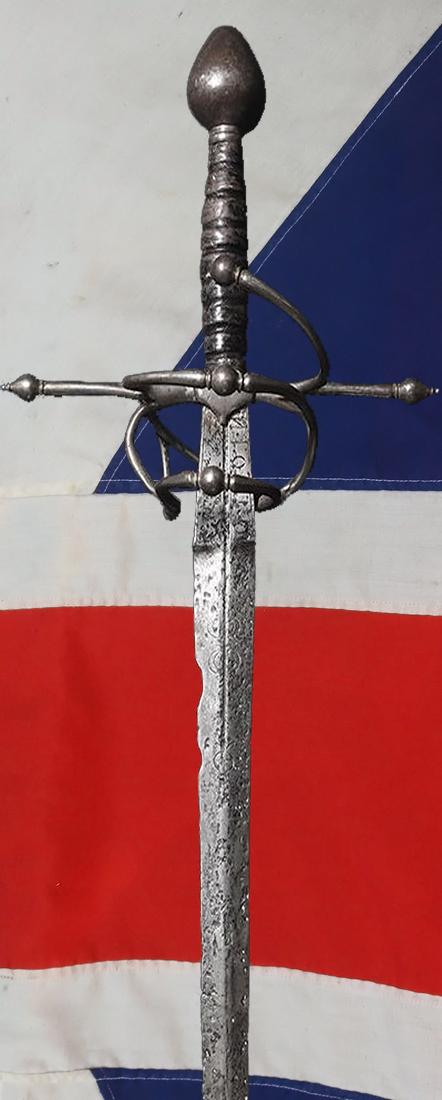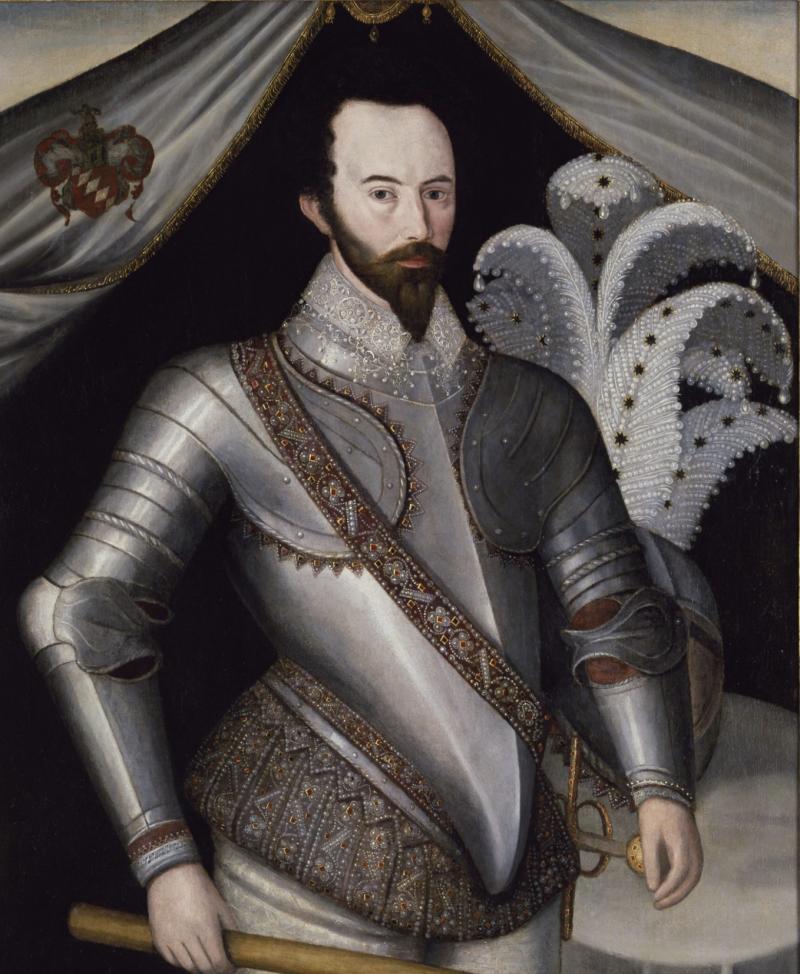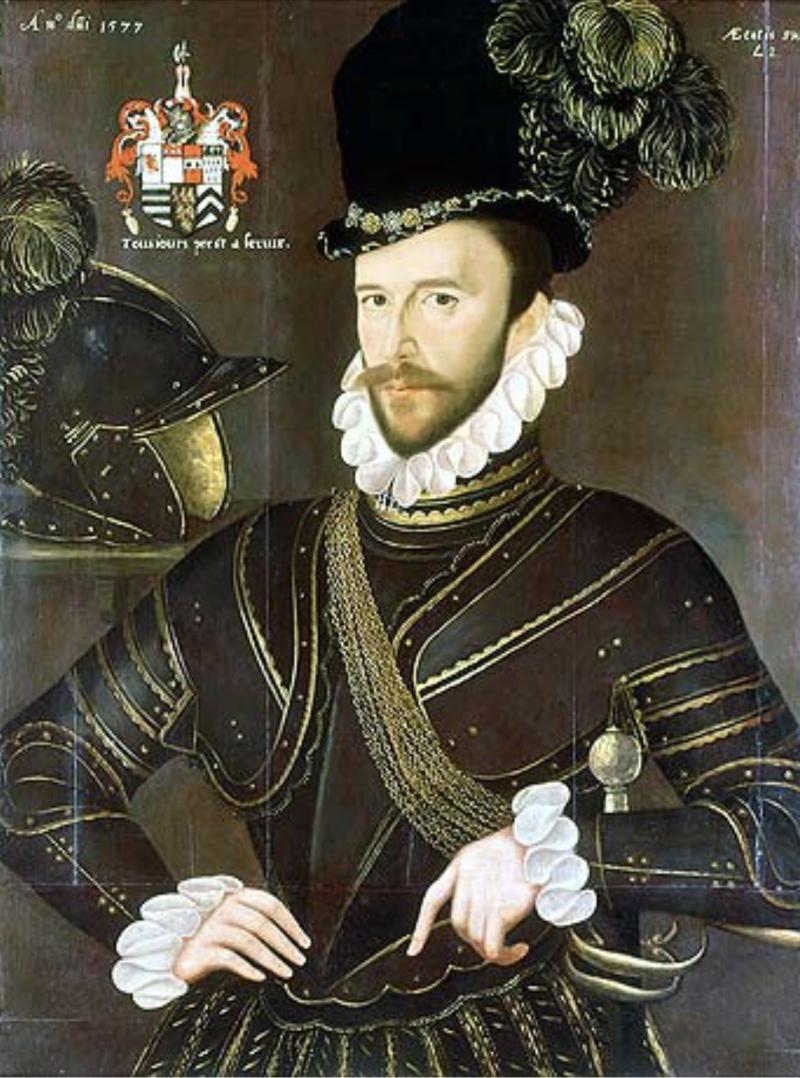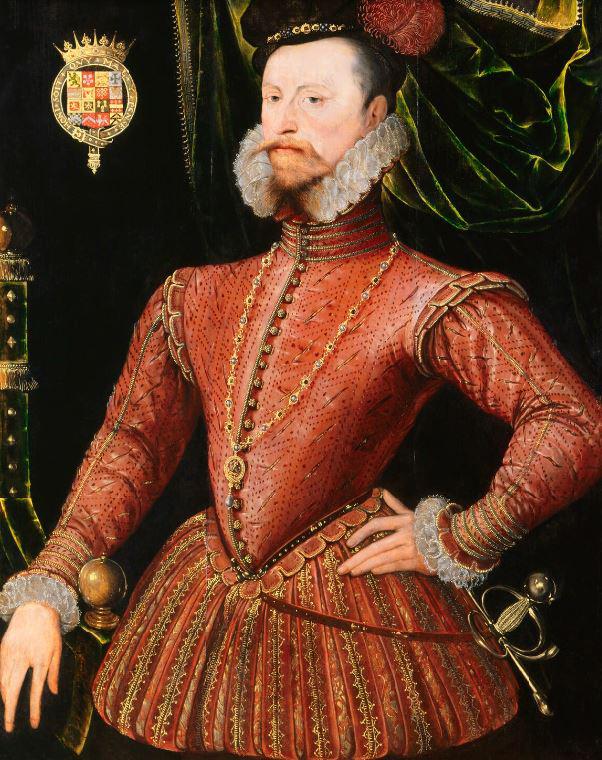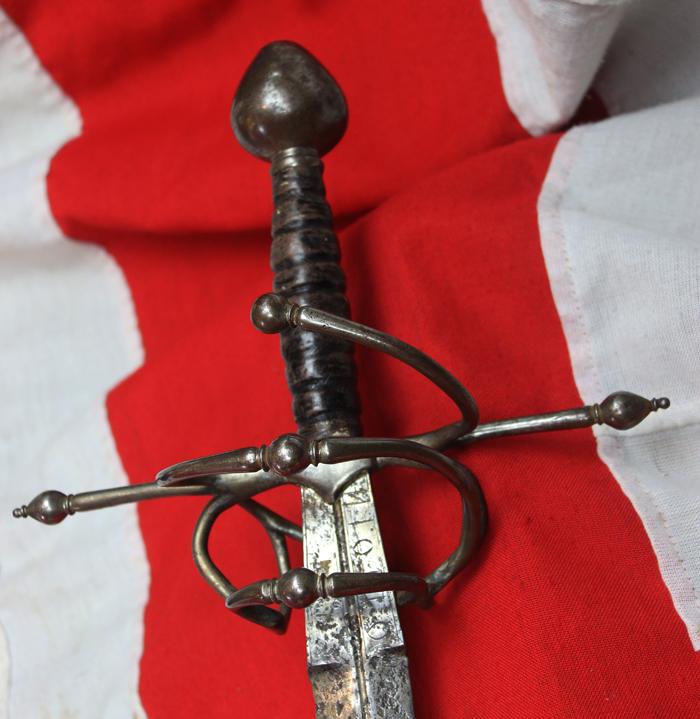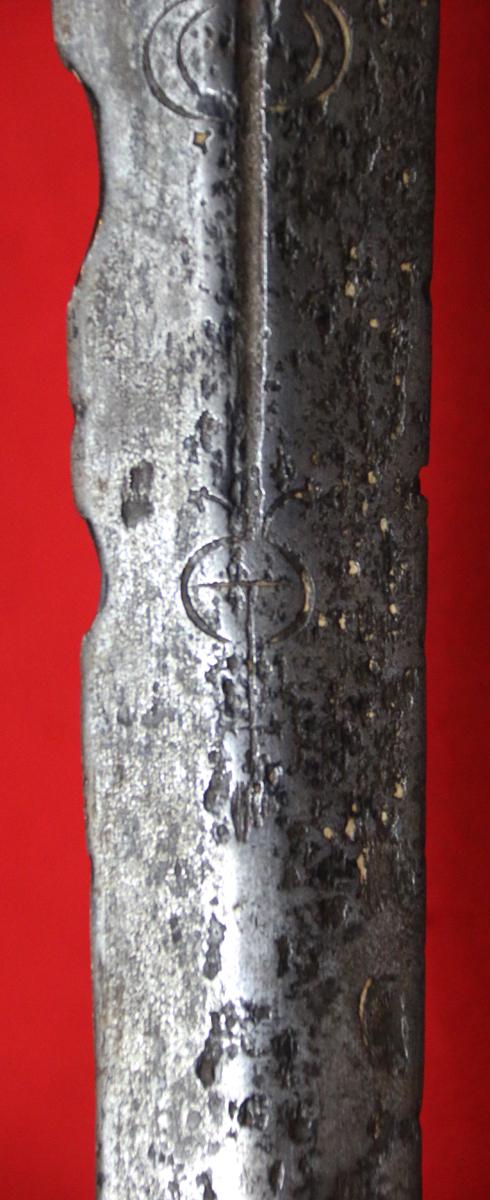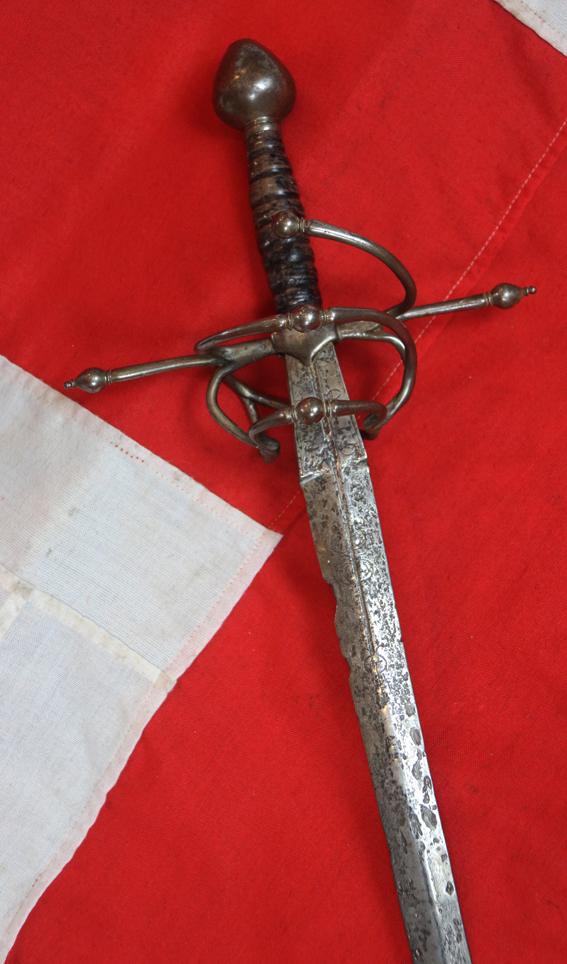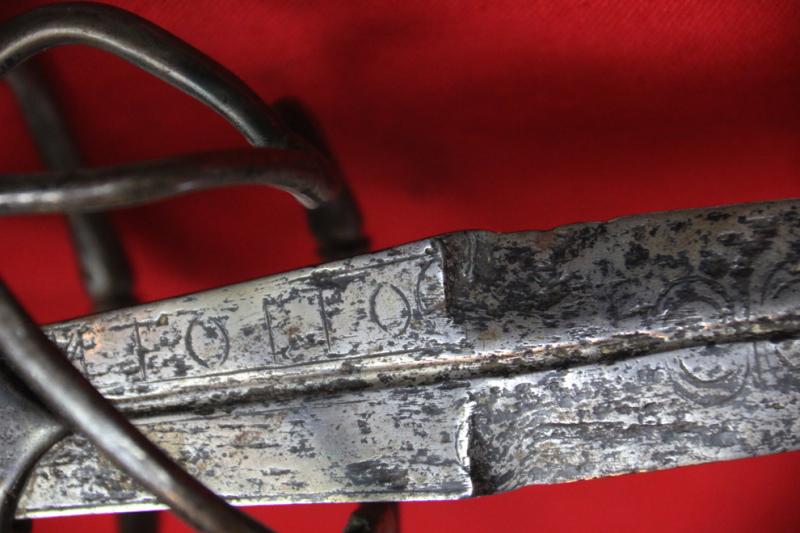A Beautiful, Inscribed, And Most Rare Original Elizabethan Tudor & Renaissance Nobleman’s Rapier 16th Century, Circa 1570
From a famed collection of early antique weapons, antiquities and fine art created in the 1960's by a highly regarded retired barrister. A stunning Renaissance rapier with tapered blade of flattened hexagonal section, fullers on both sides of the forte inscribed with Fio Nio, abbreviated Latin opposite armourer’s marks of crescents plus circle with cross on the blade, nicely defined long ricasso; with an elaborate, swept hilt with thumb ring, and three, hand guard bars, the quillon finials with shaped knobs very nicely embossed. It has a restored leather grip surface and a beautifully pronounced ovoid egg form pommel.
Often used in duels in conjunction with a maine gauche off-hand parrying dagger.
Exactly the same form of sword rapiers as worn by all of the great admirals and knights in Queen Elizabeth the 1st's court. See the three original portraits of such as Sir Walter Raleigh, Sir Francis Drake, & Earl Dudley.
Sir Francis Drake while commanding the English fleet against the Spanish Armada, plus all his senior captains and command officers, carried and used the very same form of rapier, despite its length being somewhat impractical to hand to hand combat aboard ship. It wasn’t for some time that logic prevailed and swords for use aboard ships became much shorter, such as hunting swords, and thus far more practical when hampered by low slung rigging aboard the main deck of all ships.
It was also the very form of sword carried by the senior Spanish Conquistadors on their conquest of the South Americas in the 16th century.
From the early 16th century onward, the practice of wearing a sword or rapier with civilian dress, made duels between unarmoured opponents more common. Lacking the armour, shield or hand protections worn in battle, the fighters had to block or parry an attack by other means. Methods of defence included the use of a dagger or a buckler held in the left hand. Fundamental characteristics of the spada da lato, compared to the normal one-handed sword and the sword, are the long and pointed but still massive blade, sharpened on both sides, with a short ricasso protected above by a metal ring; and the hilt with one or two-handed sleeves, normally in relation to the length of the blade and therefore to the total weight of the weapon, cross-shaped guard with large, straight or folded arms, loaded with branches, bridges and rings, articulating on the ricasso, to ensure greater protection of the hand.
For further reference as to type;
C. Foulkes, Inventory and Survey of the Armouries of the Tower of London, published 1916; and A.R. Dufty, European Swords and Daggers in the Tower of London, published 1974, see letter D on plate 21
From the early 16th century onward, the practice of wearing a sword or rapier with civilian dress, made duels between unarmoured opponents more common. Lacking the armour, shield or hand protections worn in battle, the fighters had to block or parry an attack by other means. Methods of defence included the use of a dagger or a buckler held in the left hand. Fundamental characteristics of the spada da lato, compared to the normal one-handed sword and the sword, are the long and pointed but still massive blade, sharpened on both sides, with a short ricasso protected above by a metal ring; and the hilt with one or two-handed sleeves, normally in relation to the length of the blade and therefore to the total weight of the weapon, cross-shaped guard with large, straight or folded arms, loaded with branches, bridges and rings, articulating on the ricasso, to ensure greater protection of the hand. The maker's mark shows comparisons with a rapier in the Tower of London Armoury see Foulkes, no.107 p.274, 1916
41 1/3" overall length. Fine condition.
Every single item from The Lanes Armoury, Britain's famous, favourite, and oldest original Armoury Antique store, is accompanied by our unique Certificate of Authenticity. Part of our continued dedication to maintain the standards forged by us over the past 100 years of our family’s trading, and thus, it is a lifetime guarantee.
Code: 24093


